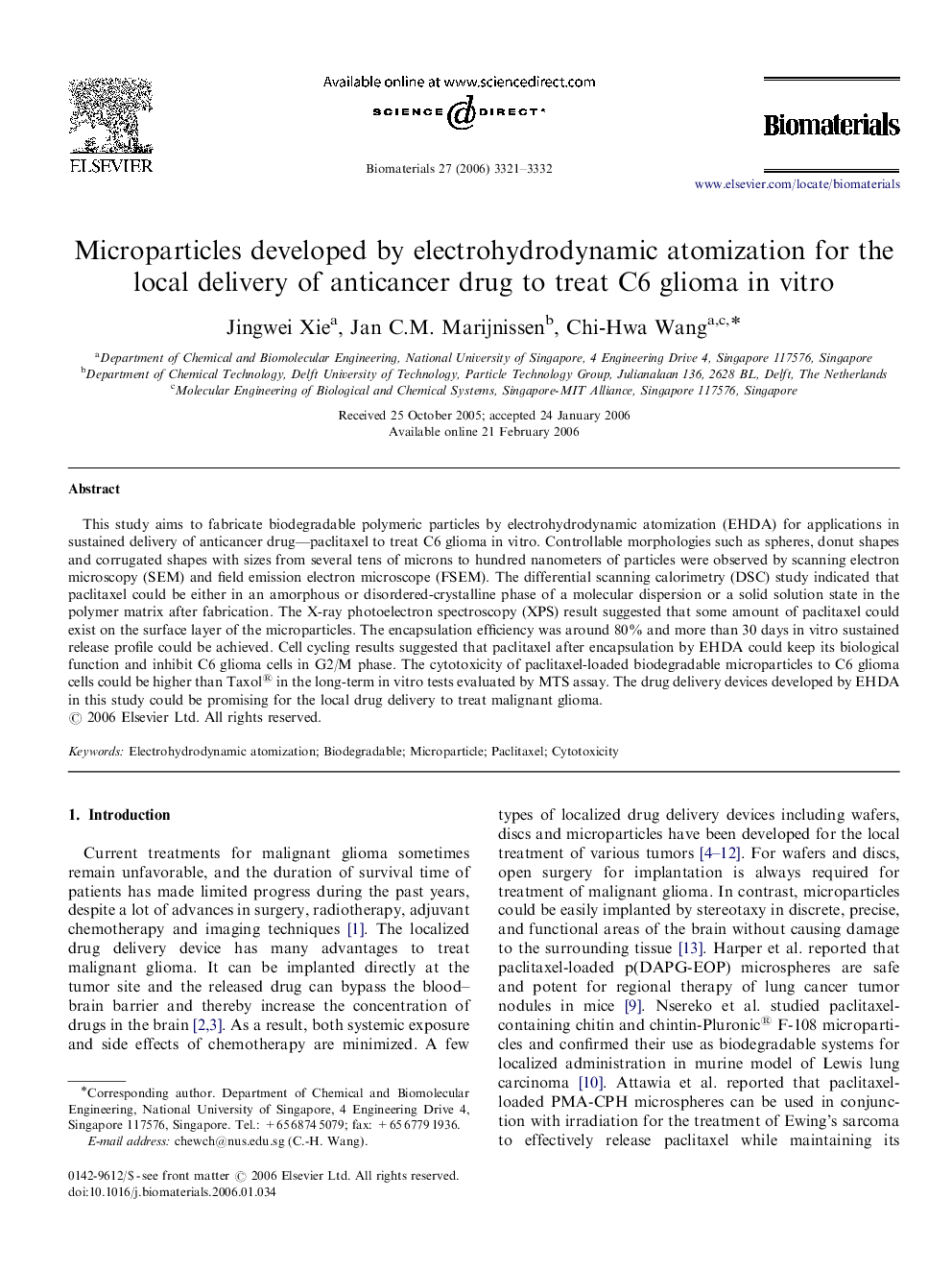| Article ID | Journal | Published Year | Pages | File Type |
|---|---|---|---|---|
| 10720 | Biomaterials | 2006 | 12 Pages |
This study aims to fabricate biodegradable polymeric particles by electrohydrodynamic atomization (EHDA) for applications in sustained delivery of anticancer drug—paclitaxel to treat C6 glioma in vitro. Controllable morphologies such as spheres, donut shapes and corrugated shapes with sizes from several tens of microns to hundred nanometers of particles were observed by scanning electron microscopy (SEM) and field emission electron microscope (FSEM). The differential scanning calorimetry (DSC) study indicated that paclitaxel could be either in an amorphous or disordered-crystalline phase of a molecular dispersion or a solid solution state in the polymer matrix after fabrication. The X-ray photoelectron spectroscopy (XPS) result suggested that some amount of paclitaxel could exist on the surface layer of the microparticles. The encapsulation efficiency was around 80% and more than 30 days in vitro sustained release profile could be achieved. Cell cycling results suggested that paclitaxel after encapsulation by EHDA could keep its biological function and inhibit C6 glioma cells in G2/M phase. The cytotoxicity of paclitaxel-loaded biodegradable microparticles to C6 glioma cells could be higher than Taxol® in the long-term in vitro tests evaluated by MTS assay. The drug delivery devices developed by EHDA in this study could be promising for the local drug delivery to treat malignant glioma.
